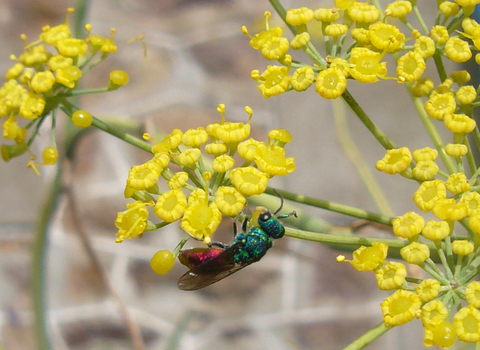
Ruby-tailed Wasp ©Skol-louarn
Ruby-tailed wasp
If seen up close, the glittering Ruby-tailed wasp is, perhaps, one of the UK's most beautiful insects. A solitary wasp, it can be found in sandy and rocky habitats like quarries, outcrops and walls.
Enw gwyddonol
Chrysis ignita agg.Pryd i'w gweld
April to SeptemberGwybodaeth am rywogaethau
Categori
Ystadegau
Length: 1.1cmCommon.
